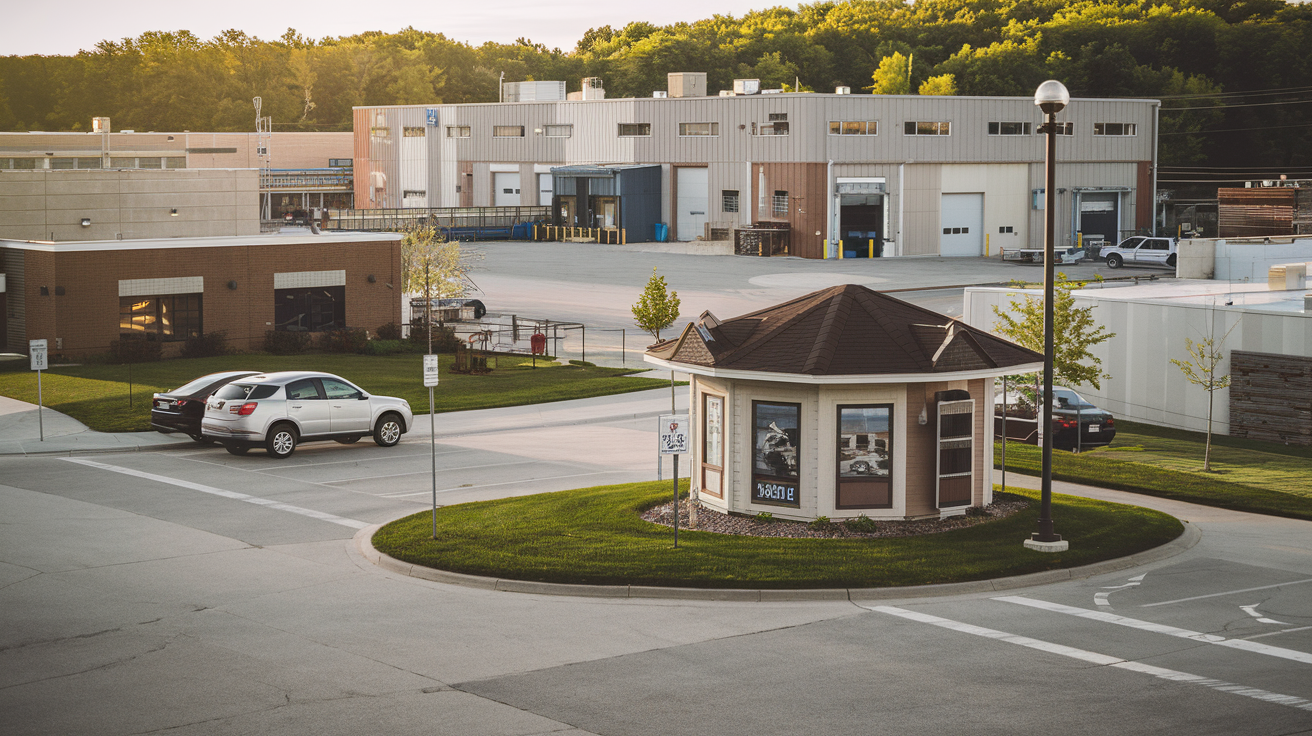A Business/Industrial Transition District plays a vital role in urban planning and development. For Isanti, MN, this district serves as a bridge between business and industrial areas, facilitating sustainable growth while minimizing conflict between different land uses. It is designed to accommodate businesses transitioning from retail or office spaces to light industrial operations. This guide explores what this district means, how it functions, and its impact on the community of Isanti, MN.
Understanding the Concept of a Business/Industrial Transition District
A Business/Industrial Transition District is a zoning designation that allows for the development of both business and light industrial activities within a defined area. It provides flexibility for property owners and developers by permitting a range of uses that blend business services with light industrial operations. For example, a warehouse may coexist with a small tech startup, both benefitting from shared resources.
In Isanti, MN, this type of district allows for careful integration of businesses and industries that otherwise might not work well together if placed in separate zones. By providing a buffer zone, it minimizes the disruption caused by noise, traffic, or environmental impact.
The Purpose of a Business/Industrial Transition District
Encourage Mixed-Use Development: These districts are ideal for encouraging a mix of business and industrial activities. Businesses can operate in proximity to light industrial manufacturers, offering benefits such as reduced transportation costs and easier collaboration.
Buffer Residential Areas: One of the main objectives is to create a buffer between residential areas and more intensive industrial zones. It reduces the potential for noise pollution, traffic congestion, or other issues that could affect nearby residents.
Promote Economic Growth: By encouraging a variety of businesses to co-exist, these districts can foster economic growth. They provide a space where startups and established companies can thrive together, utilizing shared infrastructure and resources.
Types of Businesses Typically Found in These Districts
A Business/Industrial Transition District generally attracts a mix of companies from various sectors. The businesses most likely to be found in such areas include:
- Small Manufacturers: These could range from assembly plants to small-scale production facilities.
- Logistics Companies: Businesses involved in warehousing, distribution, and logistics often find these areas beneficial for operations.
- Service Providers: IT companies, telecommunications firms, and other service-oriented businesses may take advantage of the district’s flexibility.
- Retail and Office Spaces: In some cases, retail businesses or office spaces can also operate within these districts, particularly if they serve or supply the nearby industrial businesses.
Zoning and Regulations in Isanti’s Business/Industrial Transition Districts
Zoning regulations in Isanti’s Business/Industrial Transition District aim to ensure that the transition from business to industrial use happens smoothly and sustainably. The city planners work to maintain a balance between economic growth and environmental responsibility.
Zoning Code: The zoning code will define the types of uses permitted in the district. It may also set restrictions on noise levels, hours of operation, and types of permissible structures.
Land Use Regulations: Regulations focus on how the land is developed, including lot size, building height, and how much space must be allocated to parking or green areas.
Environmental Considerations: In Isanti, like many other cities, the district regulations are designed to protect the environment. This includes provisions for stormwater management, air quality control, and waste management.
Community Impact: Regulations may also consider the impact on the local community, ensuring that businesses and industries are not disruptive to nearby residential areas. This includes managing traffic flow, reducing noise pollution, and ensuring safe transport routes.
Benefits of the Business/Industrial Transition District in Isanti
For business owners and residents in Isanti, MN, the benefits of having a Business/Industrial Transition District are numerous. This district serves as a critical component of sustainable urban development.
Flexibility for Businesses: Businesses have the flexibility to operate in a space that caters to both commercial and industrial needs. Startups and small-scale manufacturers can thrive without needing to relocate to separate zones.
Cost-Effective Development: Developing in these districts is often more cost-effective. Infrastructure such as roads, utilities, and waste management systems are typically shared between businesses, reducing overhead costs.
Proximity to Resources: Businesses that operate in the district benefit from close proximity to suppliers and service providers. Logistics companies can easily transport goods, while service-oriented businesses benefit from nearby industrial clients.
Job Creation: These districts are often hotbeds for job creation. As businesses and industries flourish, they provide jobs for the local community, boosting the economy.
Environmental Sustainability: By carefully managing the transition between business and industrial use, these districts help to minimize the environmental impact of urban development.
Challenges of Operating in a Business/Industrial Transition District
While there are many benefits, operating within a Business/Industrial Transition District also comes with challenges. These challenges must be carefully managed by business owners, city planners, and residents.
Regulatory Compliance: Adhering to strict zoning regulations can be costly and time-consuming. Businesses need to ensure that they meet all the regulatory requirements to avoid fines or delays in development.
Community Relations: Businesses in these districts must work to maintain good relationships with the local community. Noise, traffic, and environmental concerns can create tension with nearby residential areas.
Infrastructure Limitations: In some cases, the existing infrastructure may not support all types of business or industrial operations. Upgrading roads, utilities, or waste management systems may require additional investment.
Competition for Space: As these districts are often highly desirable, there may be competition for space. Businesses may need to act quickly to secure a location or pay a premium for prime spots.
Future Development of Business/Industrial Transition Districts in Isanti
The future of Business/Industrial Transition Districts in Isanti, MN, looks promising. As more businesses seek flexible, sustainable locations to operate, these districts will likely see increased demand.
Sustainable Growth: City planners are focused on ensuring that future growth in these districts is sustainable. This means maintaining a balance between business development and environmental preservation.
Technological Innovation: As businesses in the district adopt new technologies, there may be opportunities for growth in industries such as renewable energy, IT, and logistics. These innovations will drive further investment in the district.
Community Involvement: The city of Isanti is committed to involving the local community in future development plans. Public consultations and open discussions will help ensure that new developments benefit everyone.
Expanding Infrastructure: As the district grows, the city may need to invest in expanded infrastructure. This could include better roads, improved utilities, and enhanced public transport to accommodate the influx of businesses and workers.
Checklist for Businesses in Isanti’s Business/Industrial Transition District
- Confirm zoning compliance with local regulations
- Assess environmental impact and implement sustainability measures
- Build strong community relations to avoid conflicts with residents
- Plan for future infrastructure needs, including utilities and transportation
- Evaluate long-term growth opportunities within the district
Conclusion
The Business/Industrial Transition District in Isanti, MN, offers a unique opportunity for businesses looking to operate in a flexible, sustainable environment. By blending commercial and industrial uses, this district encourages economic growth while minimizing disruption to the community. However, businesses must navigate regulatory challenges and maintain good relations with the local community to succeed. With careful planning and a commitment to sustainable development, the future of Isanti’s Business/Industrial Transition District looks bright.
Whether you are a startup, small manufacturer, or service provider, the Business/Industrial Transition District in Isanti provides a fertile ground for growth and success.

